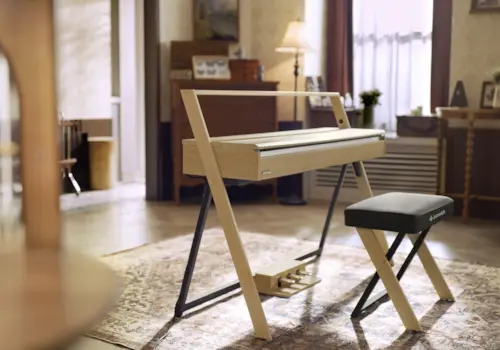Pianist and teacher Robert Estrin shares his secrets to developing speed at the piano
More motion equals greater volume – Less motion equals faster speed
I’m going to break it down into finger technique and wrist technique. I’ll show you how both of them work. To demonstrate, I’m going to use the Ballade by Burgmuller. This is a great little piece to demonstrate both techniques. The right hand has chords which utilise wrist technique, while the left hand has fast 16th-note finger work.
So let’s first talk about the wrist technique in the right hand. When you’re first learning this piece, you should articulate everything clearly by differentiating each finger and each wrist motion to achieve precision in your playing.
Wrist technique
It’s just like if you want a lot of power doing anything. For example, let’s say you are hammering in some nails. You would naturally lift the hammer up high enough to gain momentum of the hammer, which provides more motion. You’re obviously going to get far greater power from the extra motion of your arm.
In piano, you don’t use your arms for this type of technique, but you DO use your wrists. In slow practice, you want to articulate the chords with your wrist. Later, you can use less motion to achieve faster speed.
When going slowly, you can play chords with quite a bit of power if desired. Now in this particular piece, it is written at a low dynamic level. But if you want to play them loud, more wrist motion will accomplish that. As you go faster, you use less motion and stay closer to the keys.
Finger technique
It isn’t just your wrists! It also is true of finger work. As you begin to learn a piece, use raised fingers and sink your fingers into the keys, much like you do when practising exercises or scales and arpeggios at a slow speed, because it helps to delineate the release of notes. It’s actually far harder to lift up previously played fingers than to play new notes.
What do I mean by this? Well, you can demonstrate this for yourself. Put your hand on a flat surface, and lift your fingers one at a time. You will notice the fourth and fifth fingers are particularly hard to lift up when your other fingers are down. However, pushing your fingers down is not so hard.
One of the most important finger techniques to develop on the piano is the release of previously played notes
If you don’t practise releasing notes, you can get a blurry sound. Worse yet, imagine if your thumb didn’t release and couldn’t play again!
The first three notes of this piece are C, B natural, and then C again. If the C doesn’t come up in time, it won’t replay after the B plays because it would still be down. That’s why in slow practice, practising with an exaggerated motion of the fingers can really help your hand learn which fingers are down and which fingers are up. Try this and you’ll see the power you can get by using strong, raised fingers.
Typically you don’t play this way in performance, but in practice it can be extremely valuable when you’re first learning a piece. You want to really articulate the notes to figure out your hand position, and to feel your fingers really dig into the keys. You want to start very slowly with a lot of motion and raised fingers. As the tempo increases, you’ll notice that the fingers stay closer and closer to the keys. Again, less motion equals more speed.
It's basic physics: When you need power, you use more motion. And when you need speed, you use less motion
That’s the lesson for today! Try this in your playing. If you come to a passage you’re working on, and you can’t get fast enough speed, try lightening up. Stay closer to the keys, and you’ll be astounded at how much faster you can play by simply using less motion!








